The BMW M325i M-Tech II was the top-ranking E30 model to be sold new in New Zealand. We reunite two survivors from the 3-Series’ golden era
By Mark Bailey, photography by High Art Photography, Mark Bailey
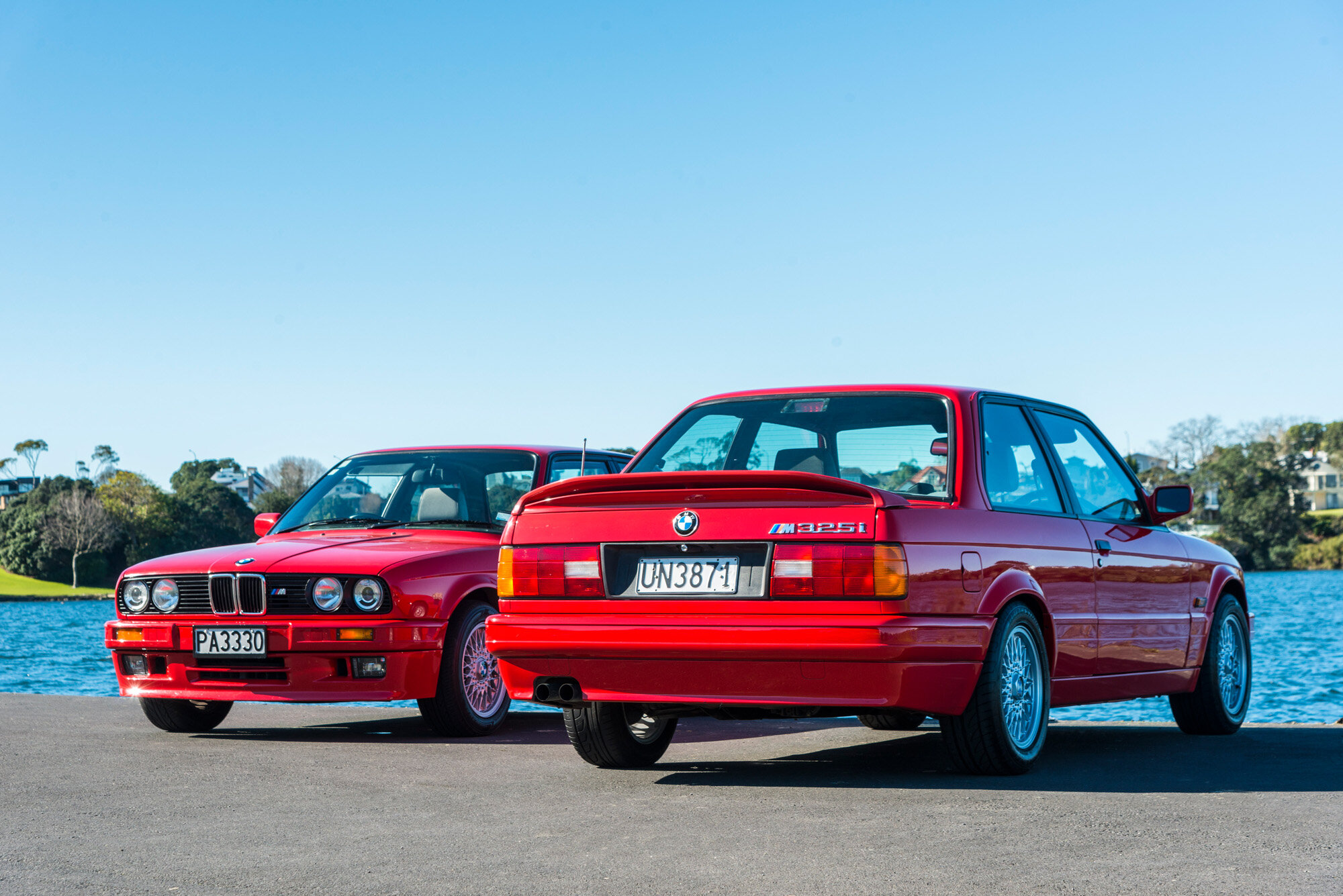
The endearing E30 range has spawned a few modern classics and the poster car is undeniably the homologation-special M3. But what if you want M3 looks, genuine sporting character, and a sensible price tag? The obvious answer is the M325i, the best E30 model to be sold new in New Zealand between 1987 and 1991. With an M-Tech body kit, upgraded factory specification, and right-hand drive layout, it’s no wonder these finely honed cars are so highly prized. They have, in fact, been on collectors’ radars for many years now.
It’s hard to find significantly better examples than the near-identical Brilliant Red cars assembled here. These are post-facelift M-Technic II models and both were registered locally in May 1990. A minor difference in their specifications is one has silvery-grey velour throughout the cabin and the other darker grey upholstery. Other than that, after 30 years on Kiwi roads, it’s not easy to tell the cars apart from 10 paces.
Their similar low mileages suggest only about 5000km of average annual use since leaving the showroom, but they have lived entirely different North Island lives. As is often the case with superior examples, they’ve now ended up in the hands of collectors and are driven even less frequently by their current keepers, but each is still exercised with great enthusiasm and respect.
With both cars now in Auckland, we were as eager as the owners to bring the cars together more than three decades after they last rubbed shoulders on a production line and quite possibly the same container ship. How would they differ in the flesh, in their on-road behaviour, and on the workshop hoist? For the last, we enlisted the help of Continental Cars BMW for a reunion in the service department, where foreman Ian Archibald went about assessing their condition.
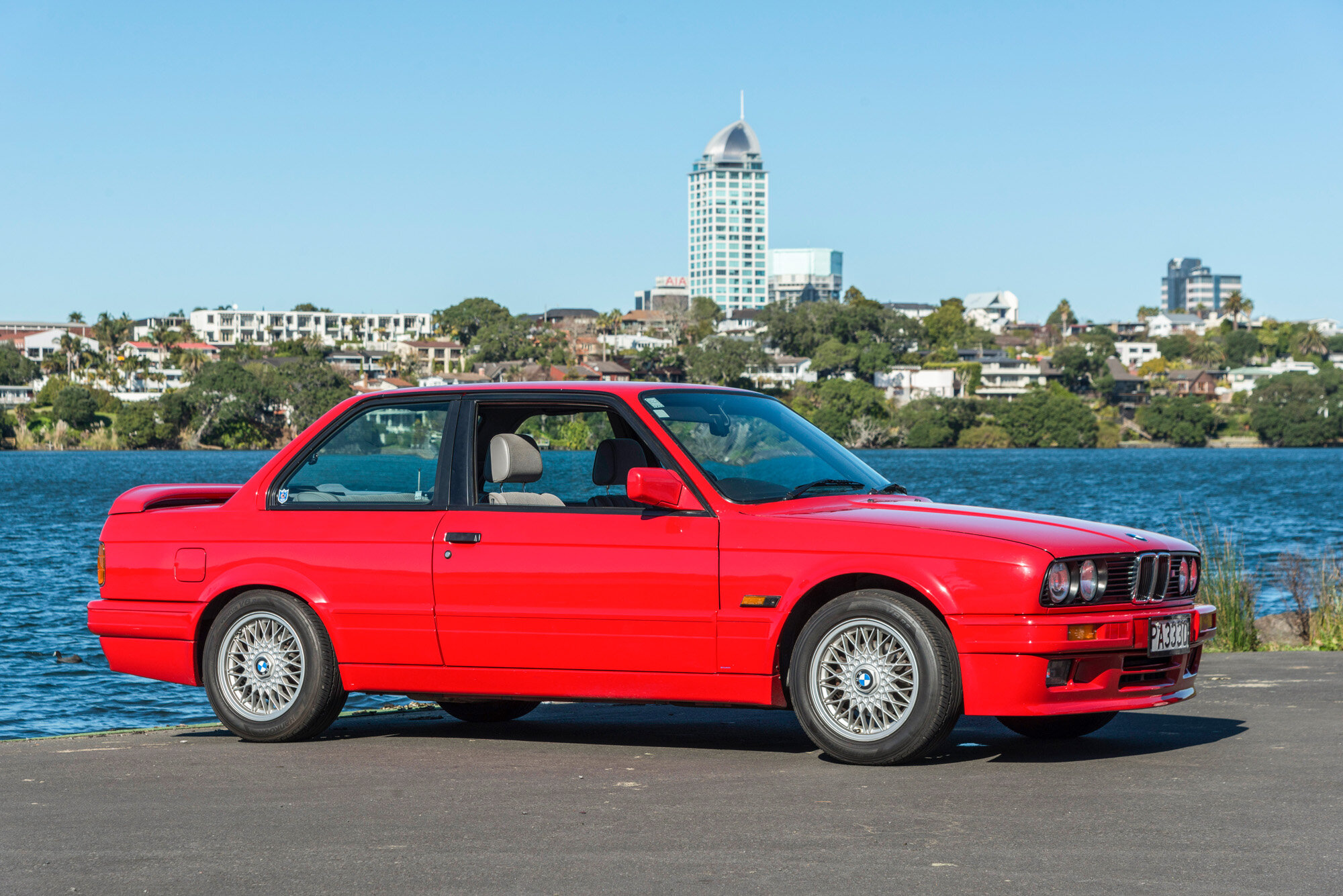
Tasty M-Technic
Underneath its two-door bodyshell, the M325i is closely related to a standard E30 325i. It retains the wonderfully smooth M20-coded straight-six engine and sports a few standard-fitment factory options. Most apparent is the heavily skirted M-Technic II body kit incorporating front fog lamps. Peer inside the cabin and you’ll notice an M-Technic steering wheel and accented gear shifter before you spot an anthracite headliner overhead.
Underpinning the cars is reworked suspension comprising Bilstein shocks, shorter springs, and a thicker rear roll bar to counter understeer. The M-Technic hardware combines with a limited-slip differential and Getrag five-speed close-ratio manual ’box to make the M325i a machine that rewards keen drivers.
So much so that the recipe resulted in what many regard as one of the best daily drivers from the late 1980s and a car that still manages to turn mundane trips into an event. It’s an extremely well-sorted and composed road car in most driving scenarios. Never feeling too firm or highly-strung, M-Tech suspension delivers a controlling hand as well as good compliance over bumpy roads and motorways. Steering weight and feel are equally well judged and the close-ratio gearbox is a fine point of engagement, helping trim the 0–100kph sprint to just over seven seconds.
So, rather than being viewed as a second-order performance model, the M325i was the sought-after 3-Series flagship for RHD markets like ours until the ‘M’ badge was next applied to the much more potent E36 M3.
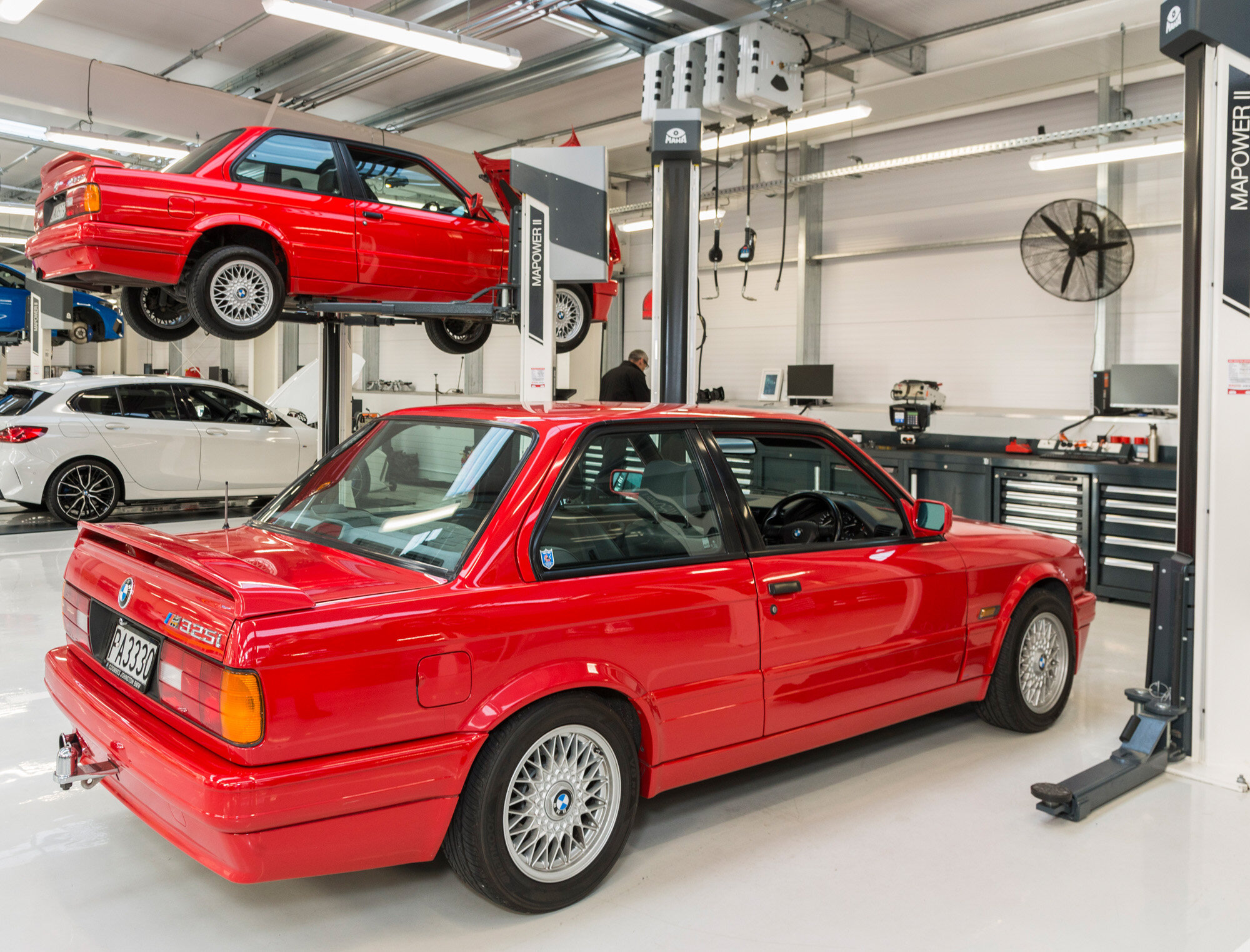
Expert opinion
Ian Archibald has seen more than his fair share of E30s in more than two decades of BMW dealer servicing. The odd M325i continues to come through the Continental Cars service bays for regular maintenance. But today is unusual, with a pair of unmissable red E30s taking centre stage.
Not surprisingly, these cars slipped outside of the dealer service network many years ago as enthusiast owners became hands-on with basic maintenance and upkeep. One car is an astute collector’s recent acquisition, the other is Aucklander Phil Henley’s long-term keeper and a car that mechanically minded Phil knows inside out.
During a methodical inspection process, Ian simply describes Phil’s M325i as a stand-out car.
“It’s all intact, it’s been serviced and repaired as needed, and the high level of attention shows. We’re most concerned with wear and tear: bushes, bump stops, and that old Achilles heel of most older cars — corrosion. Both of these cars are really good in comparison with some of the examples I’ve seen.
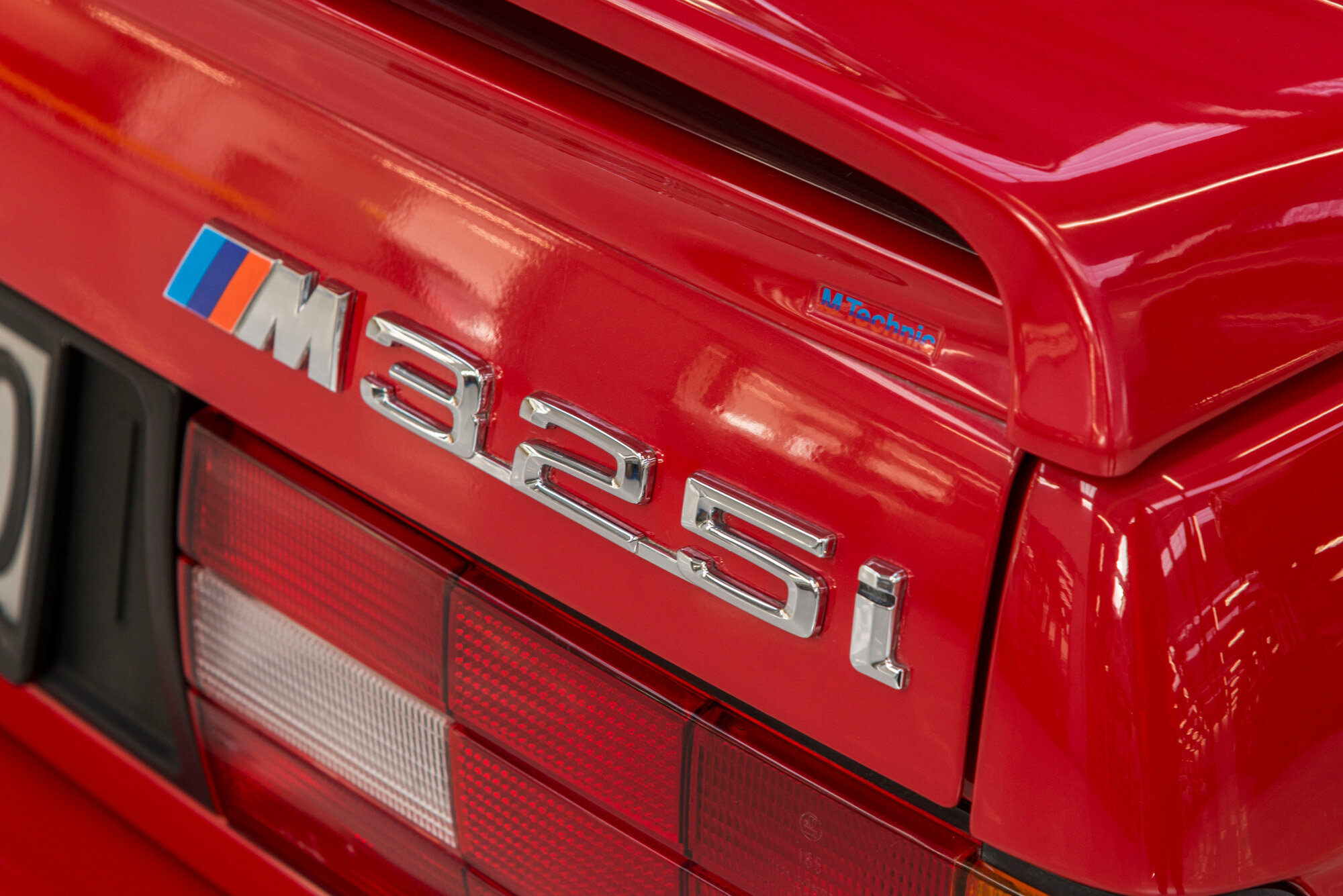
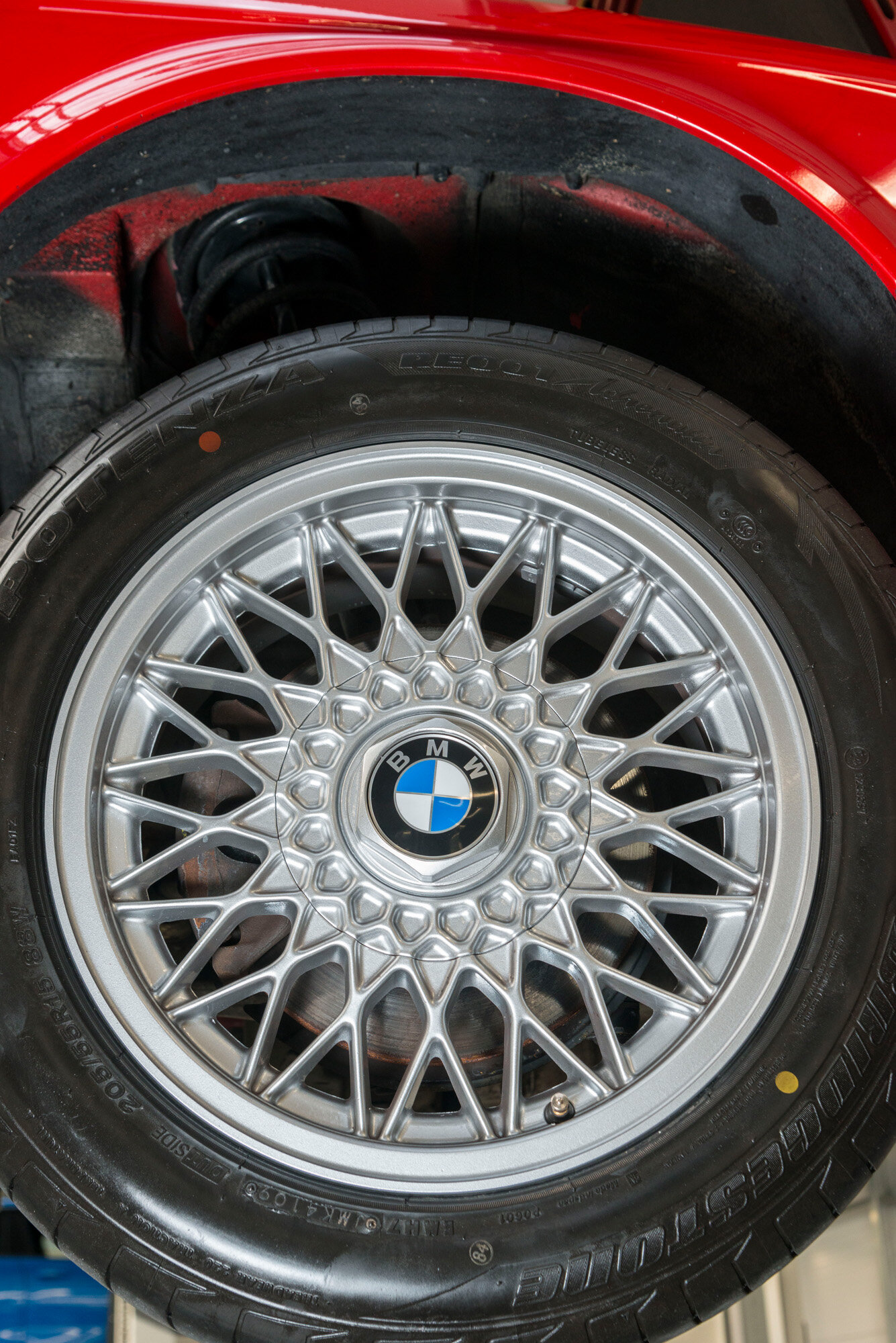
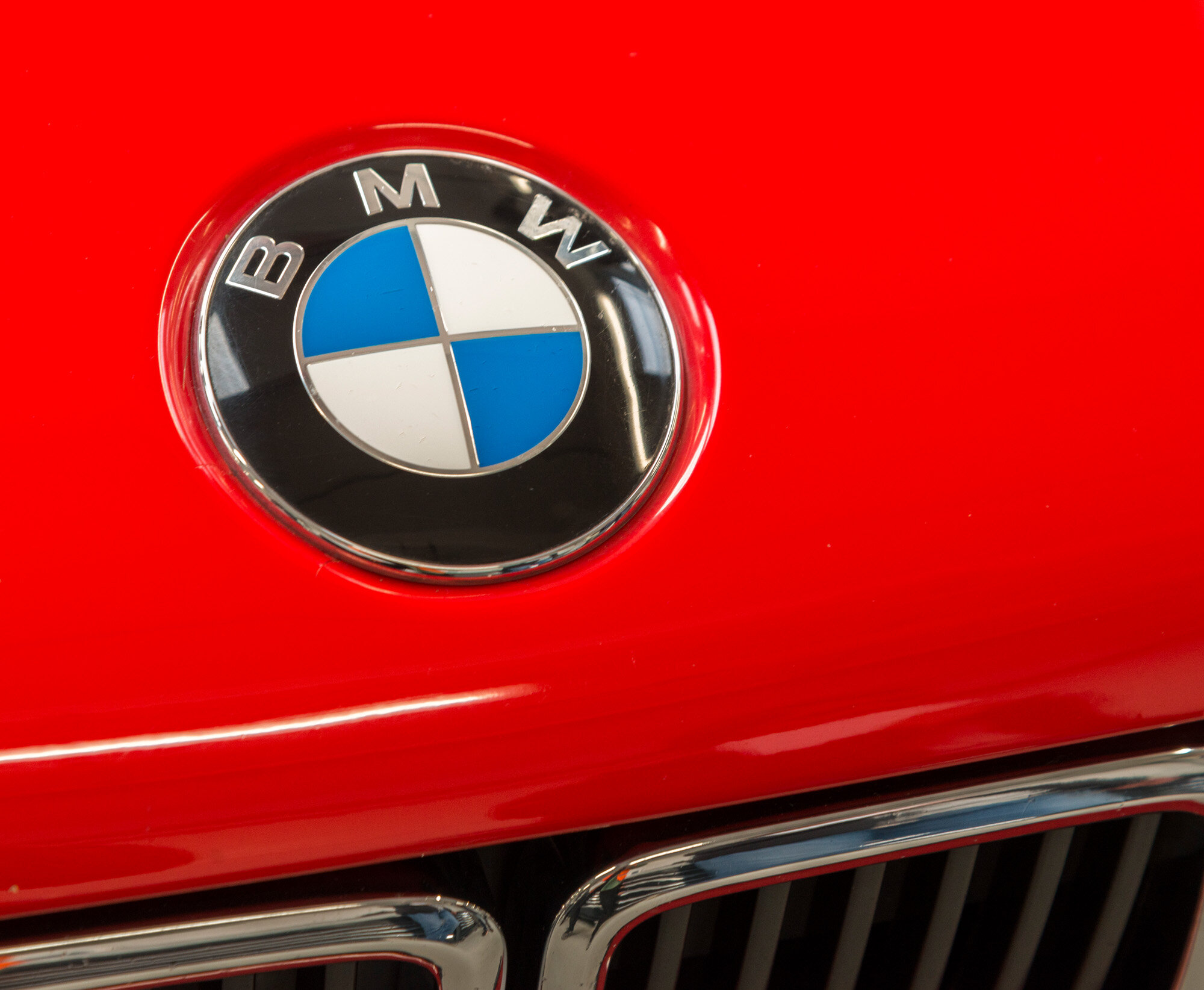
“The sills tend to get damaged from being lifted up incorrectly. On the sports suspension, shock absorbers wear out, the top shock mounts on the rears can crack and perish, and over time the bump stops at the front wear out as well. One car has recently replaced stops; the other is showing a few signs of degradation.
“Of the key replacement parts, cambelt is number one. I have one laid out on the workshop bench beside a tensioner pulley and regular service items: oil filter, fuel filter, air filter. It’s quite a short factory replacement time, at about four years/60,000km, but can be critical on the six-cylinder M20 engine. If the cambelt fails, expect bent valves among the engine damage.
“The rocker shafts typically wear, so you can develop a rattly top end, but it’s not evident with the engines here today. If the engines are over-revved they can break rockers, notably if someone mis-shifts a gear at high road speeds, but other than that they’re tough engines as long as they’re serviced with quality parts and fed fresh oil on time.
“Rocker cover gaskets often leak oil and it starts seeping down the side of the engine. Of the leaks we can see today from engines and gearboxes, they’re all minor and certainly not detrimental.
“You typically start high when countering M20 oil leaks, replacing the rocker cover gasket at the top of the engine first, cleaning the engine off, degreasing it, and running it again for a period of time — perhaps a few hundred kilometres — and checking for oil leaks again after that. Sump gaskets and crankcase breather pipe O-rings tend to seep oil, too.
“Otherwise, the reaction rod bushes commonly crack between the rubber and the housing. It’s a common WOF failure. One of our cars sports stiffer aftermarket front bushes. The same car also breathes through an aftermarket exhaust which might liberate an extra couple of horses but obscures that cultured straight-six exhaust note.
“Over time, electrics in general can misbehave. An important component to have quite fresh on these cars is the distributor cap and rotors. As they age, the moisture seeps into them and you can find that a car that’s been sitting for a while won’t start because you can’t get spark from the rotor down the lead to the plug.
“Lastly, a tight and healthy cooling system is critical for these engines to keep going and going. You have to pay attention to radiators and radiator hoses and expect a complete overhaul of the system at between 100,000 and 150,000km.”

Crisp and characterful
These are expressive, compact cars that you can engage with quickly and easily and they are very old school in their on-road appeal. Even three decades on, both examples impress for their accuracy, balance, and interaction, with pace that remains respectably quick by modern standards. Driving the two cars back to back highlights only minor differences in attitude and feel.
While the M325i has the six-cylinder engine that many expect an M3 to have, the 2.5-litre M20 is a bit light on outright power, but compensates with great character. It also delivers a hearty punch through the gears when the revs are kept up. Most satisfying is the linear power delivery and an accompanying rasp so typical of a Munich straight-six regardless of its capacity.
Road manners are surprisingly good with body roll generally well contained. M325i hallmarks are handling poise, precision, excellent controllability, and a trademark positivity of feel flowing through the axles, driveline, and engine and back to the controls. Plus, the E30’s simplicity of design translates into great ease of use, excellent outward visibility, and daily driver capability.
Inside, the driver-focused cabin has a faint air of exclusivity but majors on functionality. There’s little slack in the steering but it’s a slow-turning rack, and assistance levels are greater than you might expect. The gear shift is long in its throw; the clutch heavier than expected.
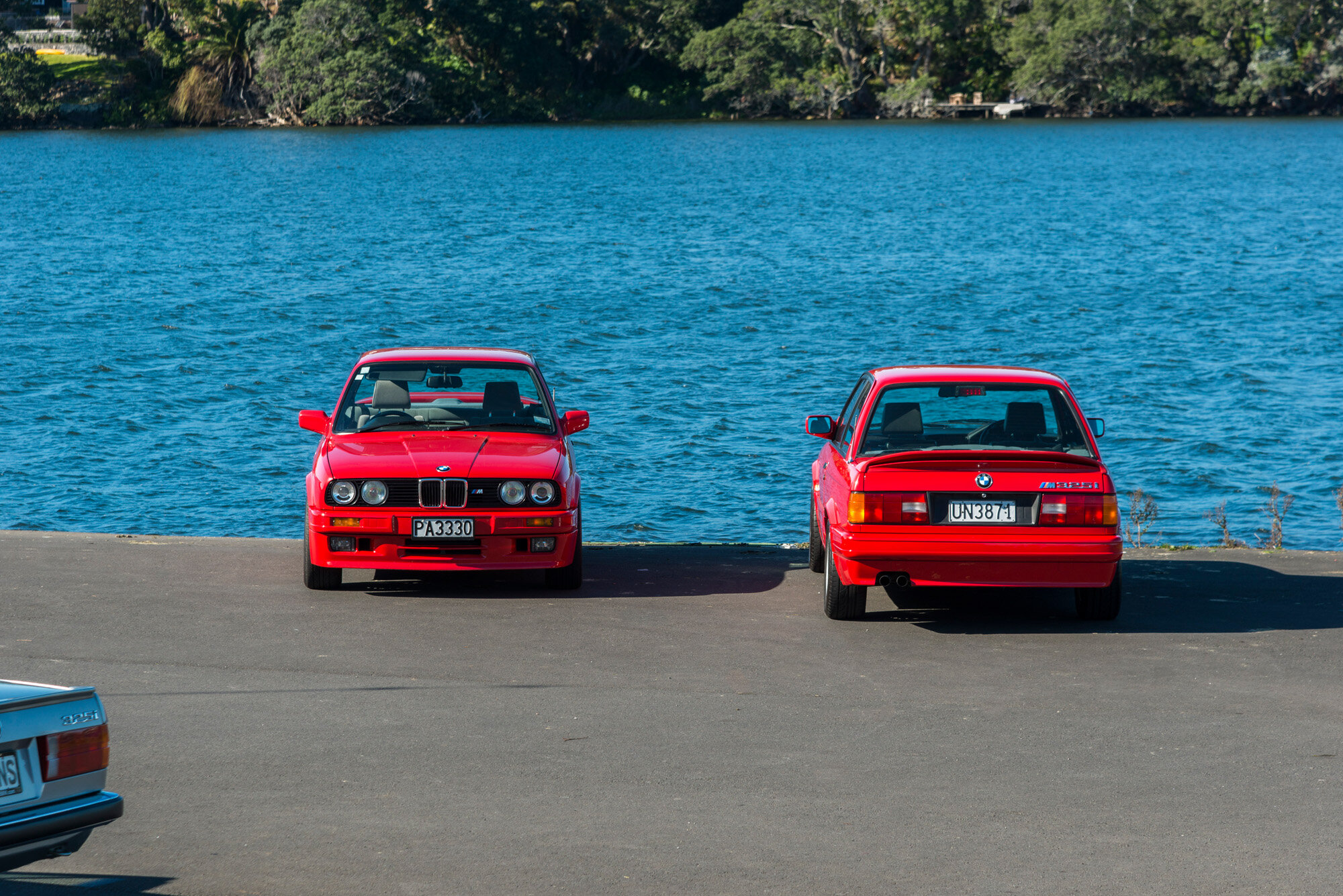
Death-defying quality
No one will be surprised to read that an M325i in fine fettle shrugs off its age with ease, and, basking in the morning sun beside Lake Pupuke, they look terrific. These were well-built cars: their shut lines remain nice and even, paintwork retains a deep shine, all the lenses are in great condition, and the 15-inch ‘basket-weave’ alloys still look splendid. Underneath the front-hinged bonnets, the engine bays and ancillaries are in fine shape.
Much like the exterior, the cabins of these E30s defy their age and remain in original condition throughout, even down to the stereos in the dashboards. The seats remain supportive, with little wear to bolsters or bases, and the headliners remain in great condition with no sagging. The dashboard and other ‘soft’ interior trims are free from cracks or sun damage.
Optional equipment was very expensive in this era, and that partly explains an absence of leather, sunroofs, and air con, but you do get electric windows and a period trip computer.
These crowd-pleasing E30s command levels of attention more modern 3-Series vehicles can only dream of. With their boxy lines, iconic quad-headlight front ends, and eye-catching body kits, they turn heads and trigger conversations wherever they go. That’s why finding a good M325i today, let alone a matching pair, requires great patience and a generous budget. Three decades after production ended, their owner appeal and driver appeal are undiminished.
This article originally appeared in New Zealand Classic Car issue No. 369



